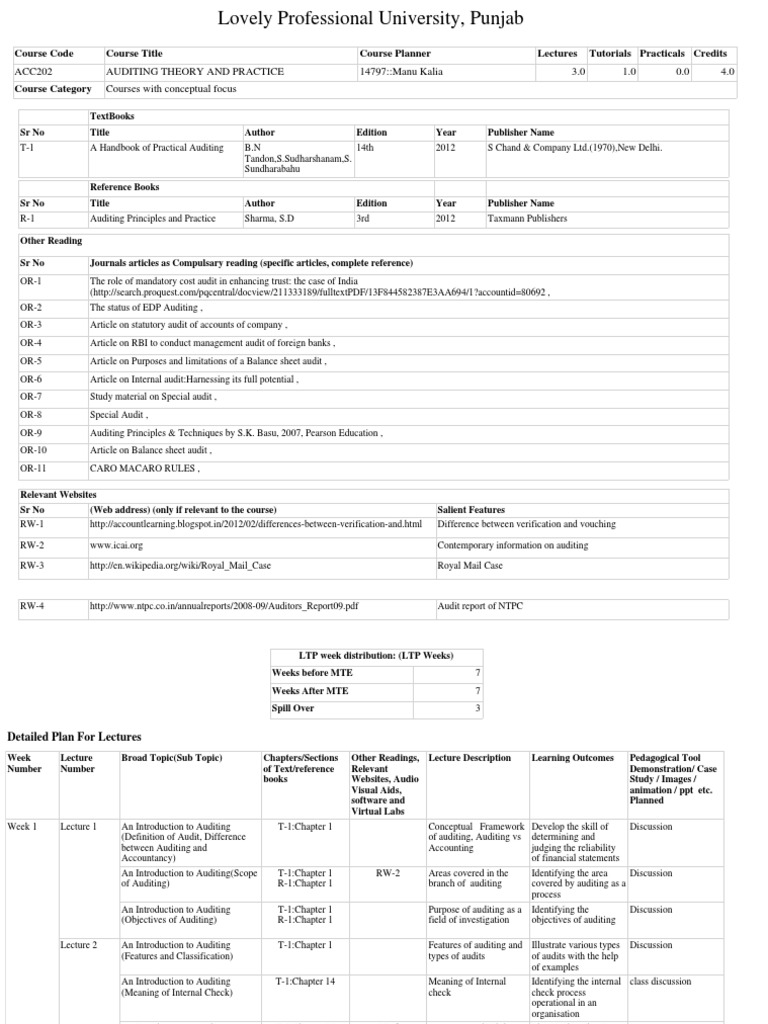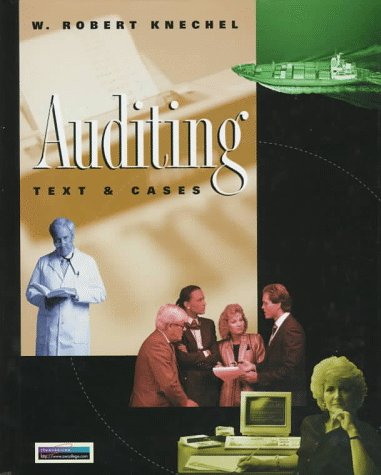Auditing Principles And Techniques By Basu
Auditing: Principles and Techniques is an attempt to explain the concepts, principles and techniques of auditing, and their applications in practical situations, in a simple and lucid language. The primary object of writing this book is to meet the requirements of undergraduate students of commerce stream for all the Universities in India. However, this book will also be very useful for the students doing M.Com, C.A., MBA and other professional courses. This book is also useful for a layman who is interested in knowing basics of auditing principles and techniques.
Basic Auditing Principles
Author by: Hernan Murdock Language: en Publisher by: CRC Press Format Available: PDF, ePub, Mobi Total Read: 26 Total Download: 685 File Size: 52,6 Mb Description: Internal auditors are expected to perform risk-based audits, but do so partially because they focus on financial and compliance risks at the expense of operational, strategic and technological ones. This limits their ability to evaluate critical risks and processes. This book merges traditional internal audit concepts and practices with contemporary quality control methodologies, tips, tools and techniques.
It helps internal auditors perform value-added operational audits that result in meaningful findings and useful recommendations to help organizations meet objectives and improve the perception of internal auditors as high-value contributors, appropriate change agents and trusted advisors. Author by: S.
Title [Pub.31] Download Auditing: Principles and Techniques by S. Basu PDF Subject: Read Online and Download Ebook Auditing: Principles and Techniques.
Basu Language: en Publisher by: Pearson Education India Format Available: PDF, ePub, Mobi Total Read: 38 Total Download: 393 File Size: 51,7 Mb Description: Auditing is a multi-dimensional subject. The scope of auditing is not only restricted to financial audit under the Companies Act, but has also been extended to cost accounting aspects, managerial policies, operational efficiencies and system applications and audit under Computer Information System environment. It also covers social implications of business organizations and environmental issues. Fundamentals of Auditing covers all these aspects and also describes the modern tools and techniques of auditing. It explains the principles of auditing in a simple and lucid language. This book is based on the syllabus of undergraduate colleges of different universities in India.
It will also be useful for students pursuing CA, BBA, MBA and other professional courses. Even a layman interested in knowing the basics of auditing will be able to use this book. Author by: J. Russell Language: en Publisher by: ASQ Quality Press Format Available: PDF, ePub, Mobi Total Read: 96 Total Download: 913 File Size: 53,5 Mb Description: This best-seller pocket guide prepares auditors to conduct internal audits against quality, environmental, safety, and other audit criteria. This handy pocket guide covers all the steps necessary to complete an internal audit, from assignment to follow-up.
New and updated chapters reflect new techniques to address vogue requirements, more illustrations and examples, ISO 19011 thinking, and verification of auditee follow-up actions. This condensed, easy-to-read book is a valuable resource and great tool for training others on how to perform an internal audit.
It is appropriate for those who have no prior knowledge of audit principles or techniques. Author by: Harvey Cardwell Language: en Publisher by: R.T. Edwards, Inc. Format Available: PDF, ePub, Mobi Total Read: 86 Total Download: 511 File Size: 55,7 Mb Description: The logic and language of auditing for fraud. This book is a revised and condensed version of the groundbreaking classic in which Cardwell introduces a comprehensive system for detection and deterrence of 'inside theft.' Inside theft is the fraudulent transfer of value from owners, undertaken by employees for their own benefit or that of their accomplices.

Audit surveillance, but one component of this system, is a strategy centered on the books and records of the firm that uses incisive tests of limited scope to detect the evidences of inside theft. In short, it is a risk-based application of the common sense notion that to detect something, one must test for it. Includes both broad accounting theory on employee fraud as well as procedures used by auditors in the detection of complements, fraudulent credits, and certain forms of conversions; such as tests of reasonableness, verification methods (corroborative procedures), conversion surveillance, and oral inquiry. Author by: James C. Paterson Language: en Publisher by: John Wiley & Sons Format Available: PDF, ePub, Mobi Total Read: 37 Total Download: 364 File Size: 45,5 Mb Description: Using lean techniques to enhance value add and reduce waste in internal auditing Lean Auditing is a practical guide to maximising value and efficiency in internal audit through the application of lean techniques. It is an ideal book for anyone interested in understanding what progressive, value adding audit can be like.
It is also ideal for anyone wondering whether audit activities can be streamlined or better co-ordinated with other activities. The book contains practical advise from the author's experience as CAE of AstraZeneca PLC; from his work as a consultant specializing in this field; as well as insights from leading CAEs in the UK, US and elsewhere. In addition, there are important insights from thought leaders such as Richard Chambers (IIA US) and Norman Marks (GRC thought leader) and Chris Baker (Technical Manager of the IIA UK). Increasing pressure on resources is driving a need for greater efficiency in all areas of business, and Internal Audit is no exception.

Lean techniques can help streamline the workflow, but having only recently been applied to IA, lack the guidance available for other techniques.